For more than half a century Gérald Pot has been intensively involved with the alphorn. As a child, he was first captivated by the magical sound. At the age of nine, he started making music himself – his father was a bandmaster in the local brass band. The alphorn was added later. Through his contact with the mountain farmer Pierre Cochard, he also came to alphorn making. Cochard(here in a great documentary by TSR from 1976) didn’t teach him many secrets, but knew how to spur the young pot’s ambition. During the next three decades, Gérald rose from mechanic to technician in a chemical factory, building his alphorns in his spare time. Since his early retirement at the turn of the millennium, he has been able to devote his time entirely to alphorn making.
To this day, he is still searching for the even better instrument. Instead of relying on fluid-dynamic computer calculations, he takes an empirical approach, such as testing seven different prototypes. He has already drawn more than 70 different stencils. He keeps experimenting with the different conicities of the partial tubes (each partial tube is linear in itself, but the angle increases downward from the hand tube). He has continued along the path of the great mensur in recent years. He has enlarged the bell and stem, and recently also increased the diameter of the last bush by another centimeter. The result of a lifetime of searching is markedly different from the horns Gérald built earlier in his career. You can see the pride he takes in his latest instruments as he sings into the cup and the wood begins to vibrate.
Gérald makes no secret of his findings. Anyone could measure and copy the mass of his horns anyway. Regarding the right wood, he has very clear opinions: he not only follows the moon and the planetary constellations, but after his experiments he is also convinced that the west side of the tree has the better sounding wood – more than the annual rings, the “solar winds” determine the sound. Alphorns should be built from straight tree trunks turning to the left.
With the checkerboard pattern on the cup cut from various squared timbers, the latest creations are visual eye-catchers. In the mosaic, Gérald likes to build Swiss crosses or the Savoy coat of arms. The large scale naturally catches the eye – and is reflected in the weight of the horns. A clever solution is the patented foot, which rotates around a pin and is held in place by two magnets. This mechanism protects the instrument from damage by careless wind players. The other details are emphatically plain. Gérald builds only coiled horns out of conviction. Again, the main reason is to protect the horn; he also believes that the pedigree compresses the wood and prevents the diffusion of vibrations. For winding, he uses narrow pedigree cane (3mm), which gives his instruments a delicate touch.
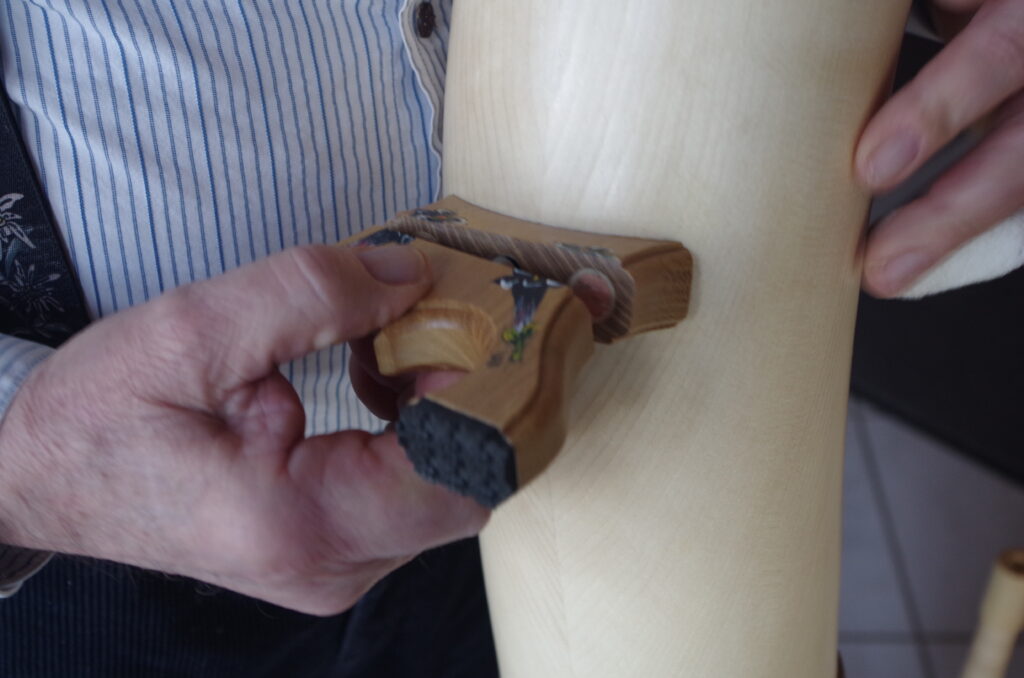
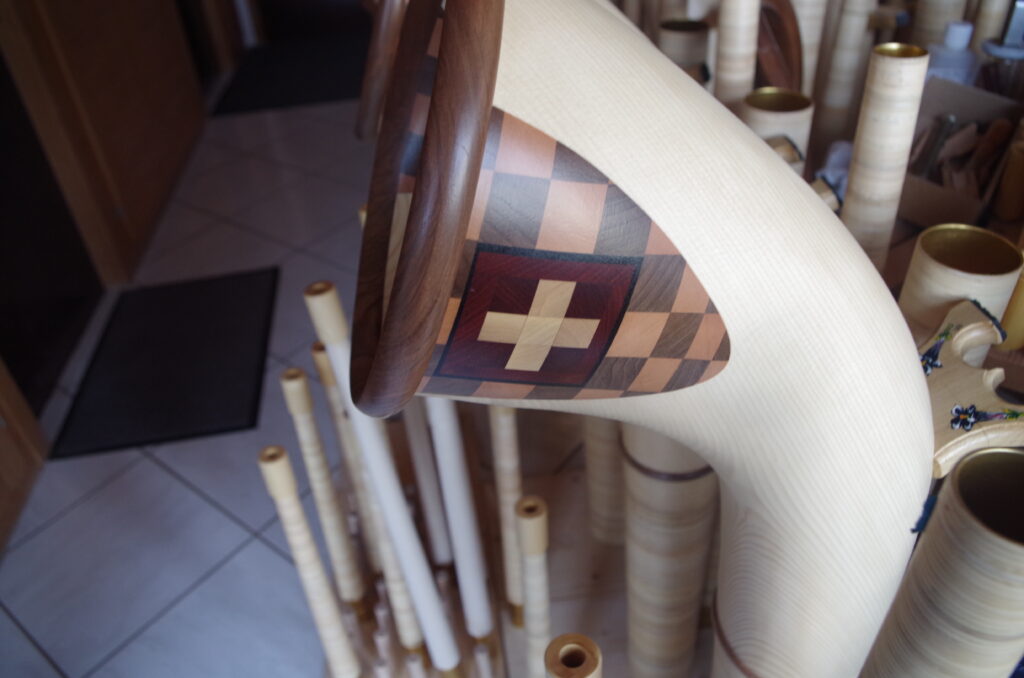
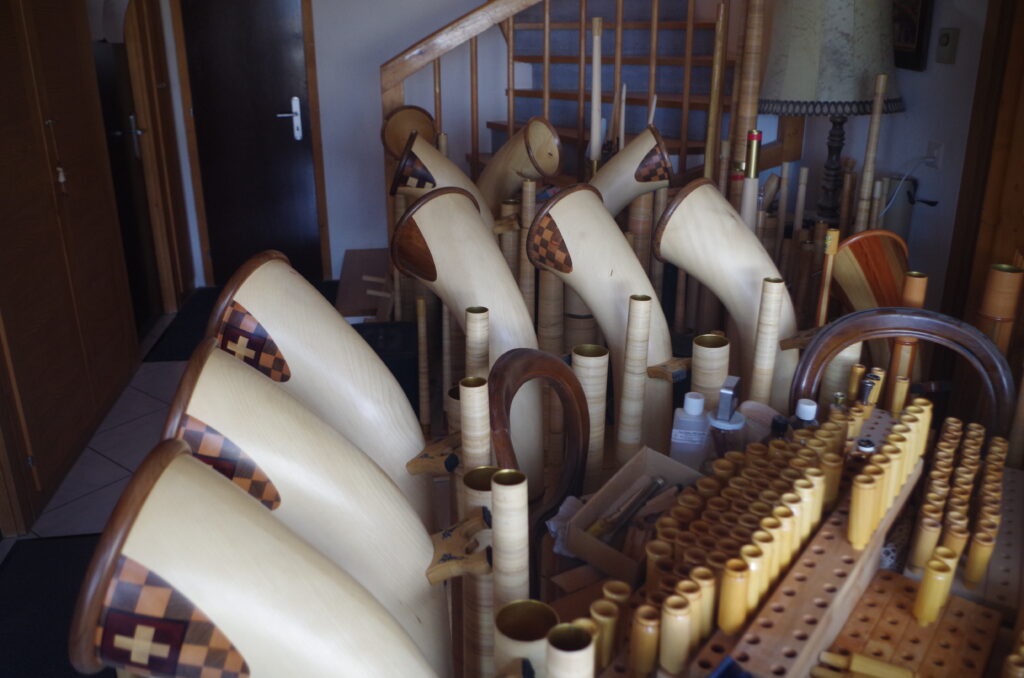
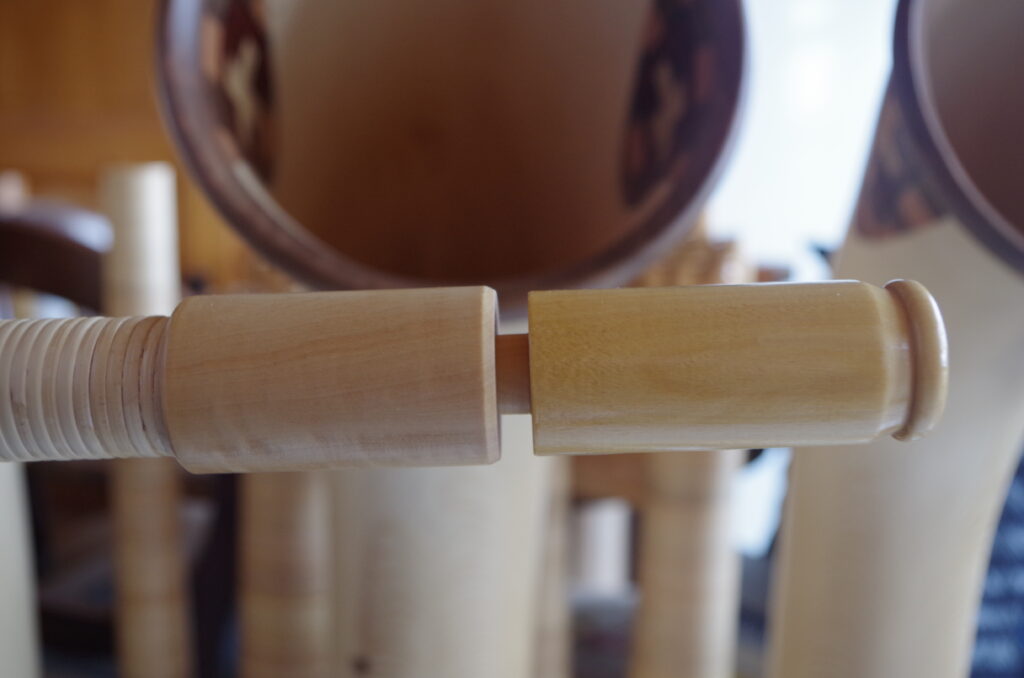
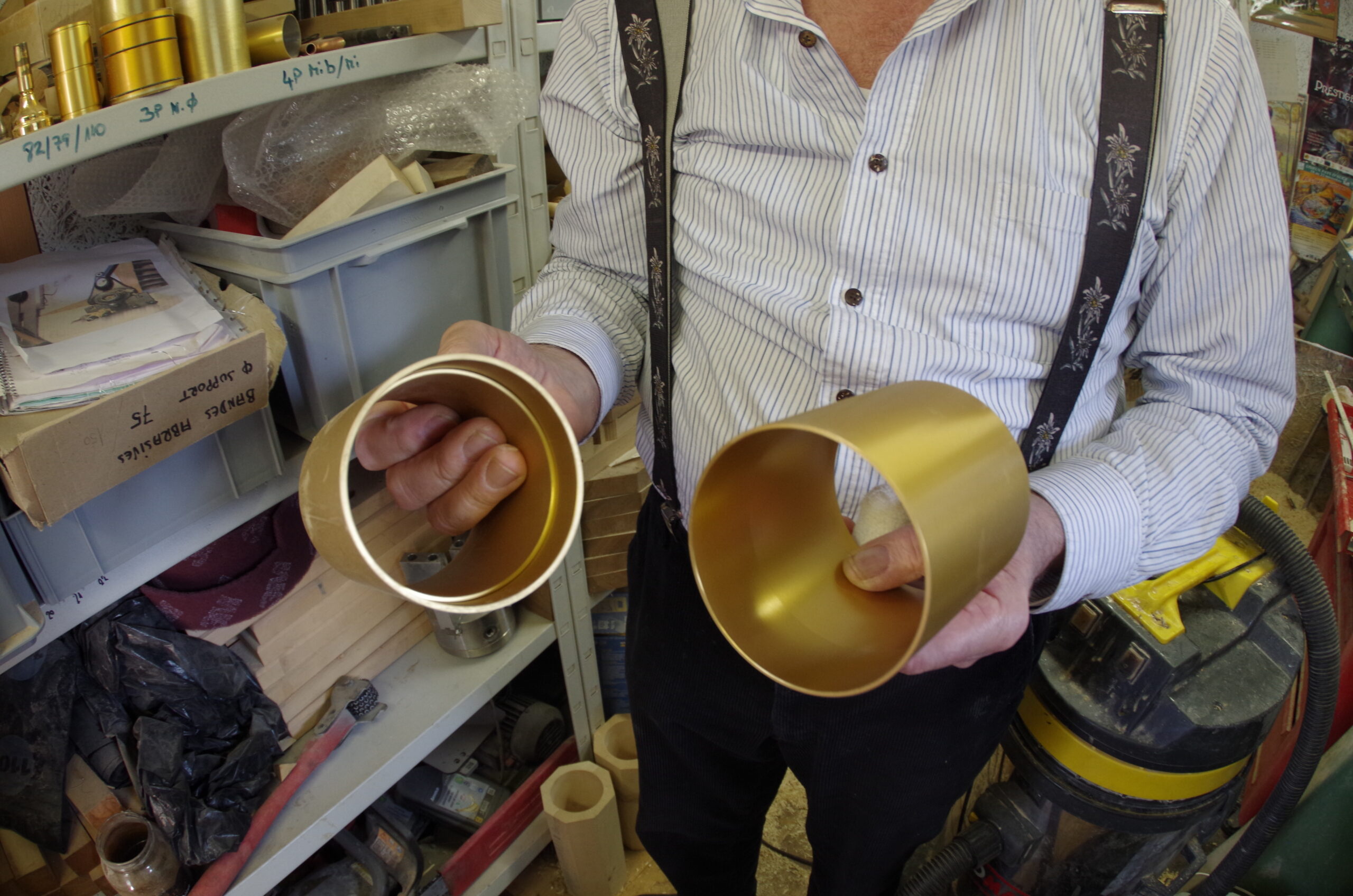
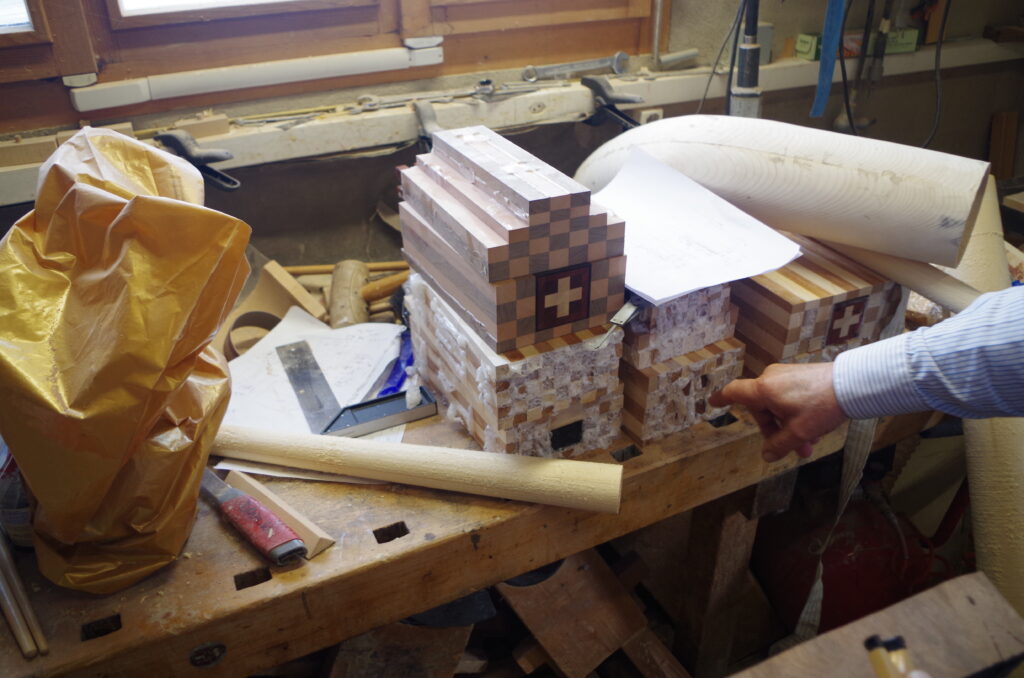
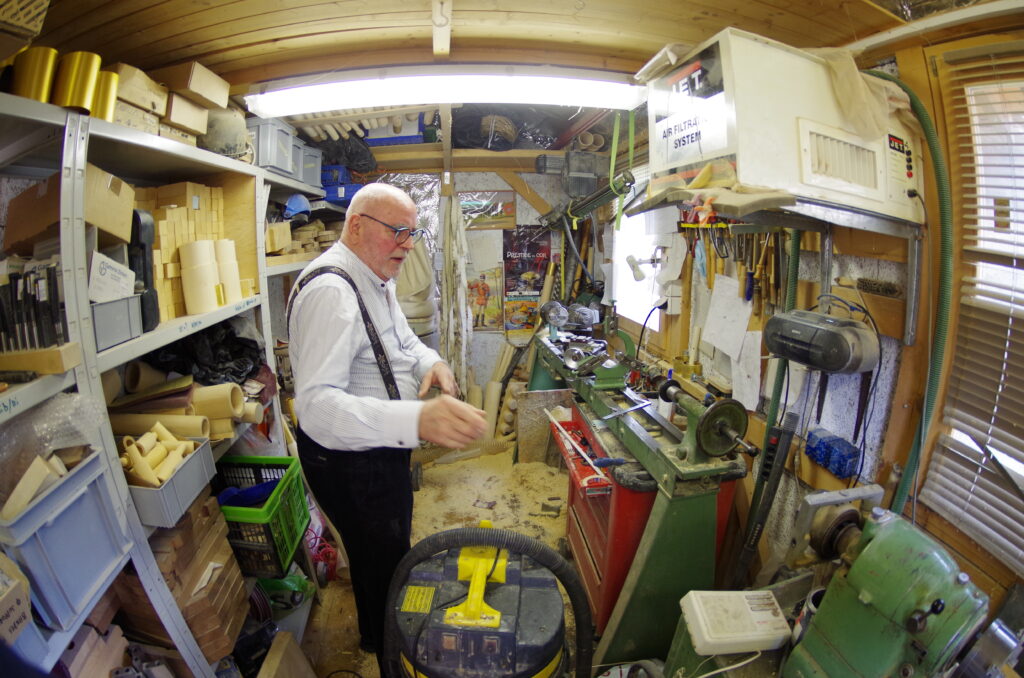
Gérald has always collaborated with outstanding horn players along the way. The best known in the alphorn scene is Joszef Molnar, who for a long time promoted the pot horns as a “brand ambassador”. In conversation, Gérald expresses his admiration for the blowing technique of professional horn players and emphasizes that the large volume of his alphorns require just such a solid breathing technique. I’m afraid that I didn’t live up to those high standards in the test match. In order to really assess the sound power – the strength of the pot horns – a test in a narrow interior is also conceivably suboptimal. After all, I noticed how the sound spread out wonderfully as the dynamics increased. Regarding intonation, the tested alphorn was almost perfect. Gérald tunes his instruments to a1=442Hz and tries to move the critical notes (especially the b) slightly towards equal temperament. The instruments are also surprisingly agile, but require a stable support and good airflow to do so.
For a long time Gérald has been selling his alphorns for 3600 CHF (including bag and mouthpiece). He could not tell me how many alphorns he has built over the years. But he makes no secret of the fact that his delivery times are flexible: anyone who annoys him will have to wait a long time for an alphorn. After a long search, he has found a designated successor in Éric Mauron. Gérald is active on Facebook, but has no functioning website. Six years ago, Bernard Jeker produced a detailed video on how to make an alphorn with him (in French only). Below are my personal impressions from my visit in April 2023.
Conclusion: A tremendous alphorn with a broad sound and great dynamic breadth. I wish Gérald that he can continue his search for the perfect alphorn for many years to come and, as he says, that one day he will take his tools with him to teach the angels in heaven how to blow the alphorn.
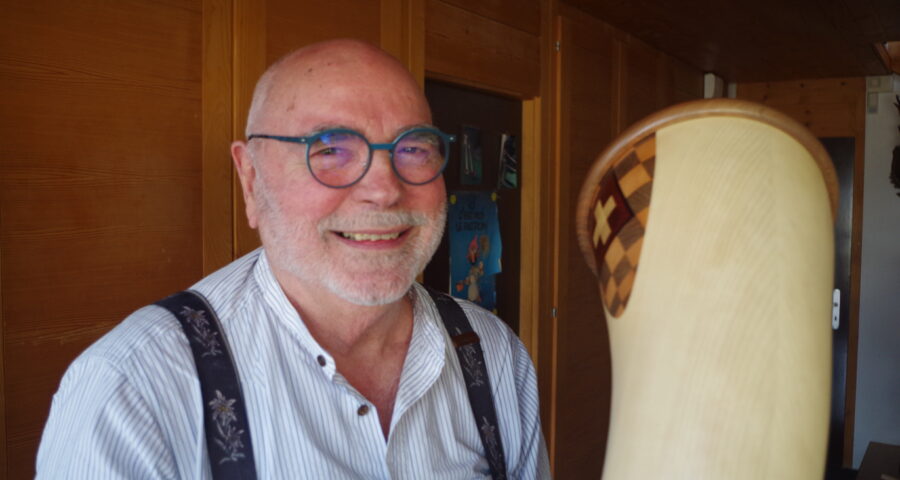
Leave a Reply